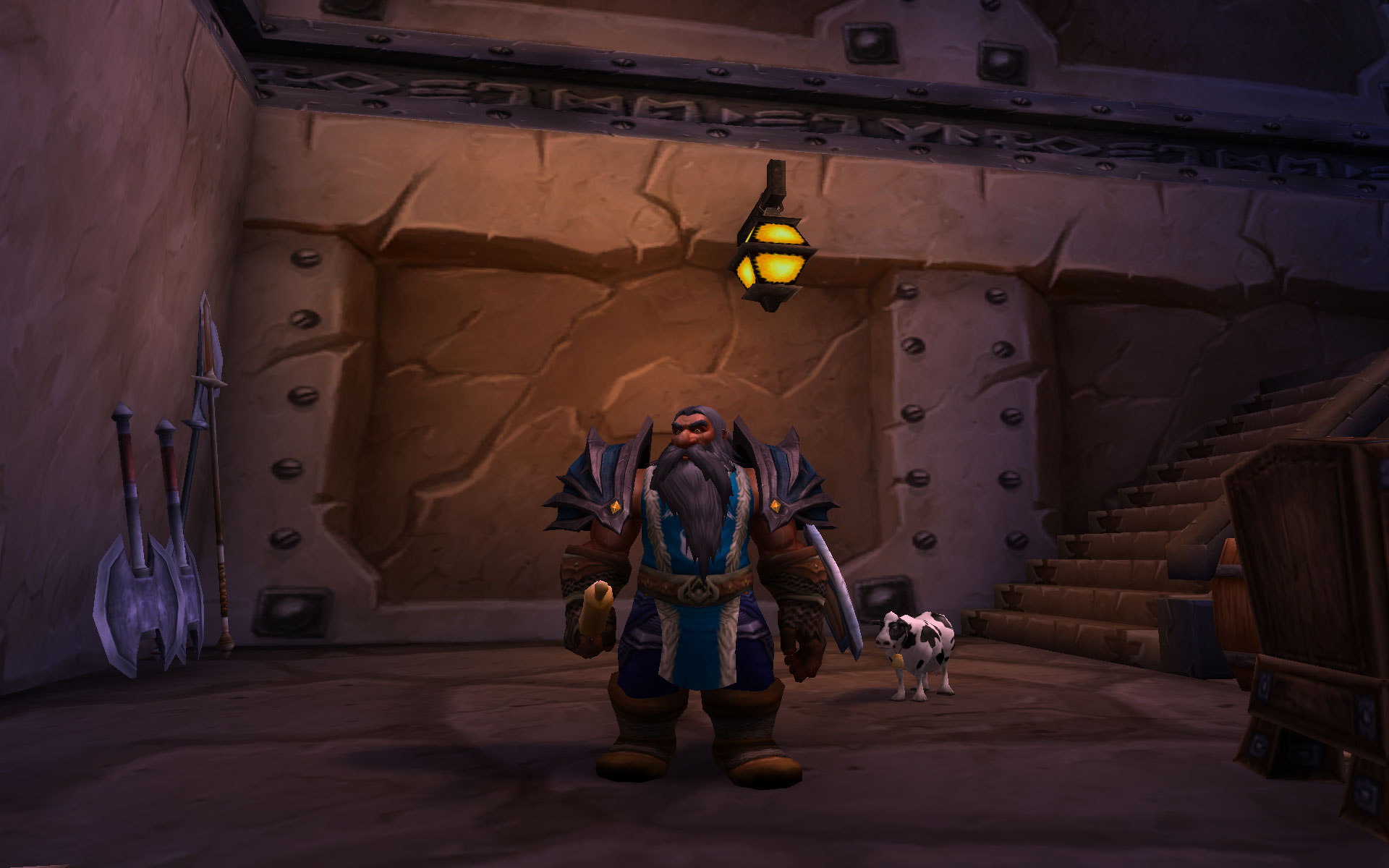Looking good
One of the questions I had when pondering the rare mob collection project was how to improve the quality of the screenshots - pictures or it didn’t happen, after all.
After a bit of hunting around, I found that there a few console only settings in Warcraft related to the screenshot quality. If you type these commands in the chat window and press enter, they are changed permanently everywhere. (You don’t get any feedback that anything happened, but it does work.)
The first is choosing between JPG (the default) and TGA. TGA is a lossless format, so the image quality is higher and non compressed, but it is a fairly arcane format - you’d want to convert it to something more useful like PNG to use it on Wordpress et al. In any case, the command to change it to TGA is:
/console screenshotFormat tga
And to switch back to JPG:
/console screenshotFormat jpg
Sticking with JPG is more convenient, but the default quality is pretty average. The good news is there’s another console setting that bumps up the JPG quality until it’s barely different from the TGA files (confirmed by much internet commentary). Wowheads screenshot submission guidelines state the default JPG level is 3, but we can bump it all the way up to eleven 10:
/console screenshotQuality 10
I tried this and while the difference is noticeable if you look closely, it’s not as huge as you might expect. One byproduct is the filesize grows from about 500KB to 2MB, but with some judicious resizing the filesize gets more reasonable. So it seems changing the quality setting is not quite enough. Which means learning more about doing some post processing on them.
There are some great photography-inspired tips in this excellent article on Blizzard Watch which seems a good place to start. Aside from the framing tips, the main advice seems to be about adjusting colours and contrast, to get the details to really pop and sparkle. The main problem I see is that the screenshots are too dark, so I played around with an image of our second RFC run to see what could be done. Here’s the default shot:
The heavy contrast is quite nice, but it does tend to hide much of the detail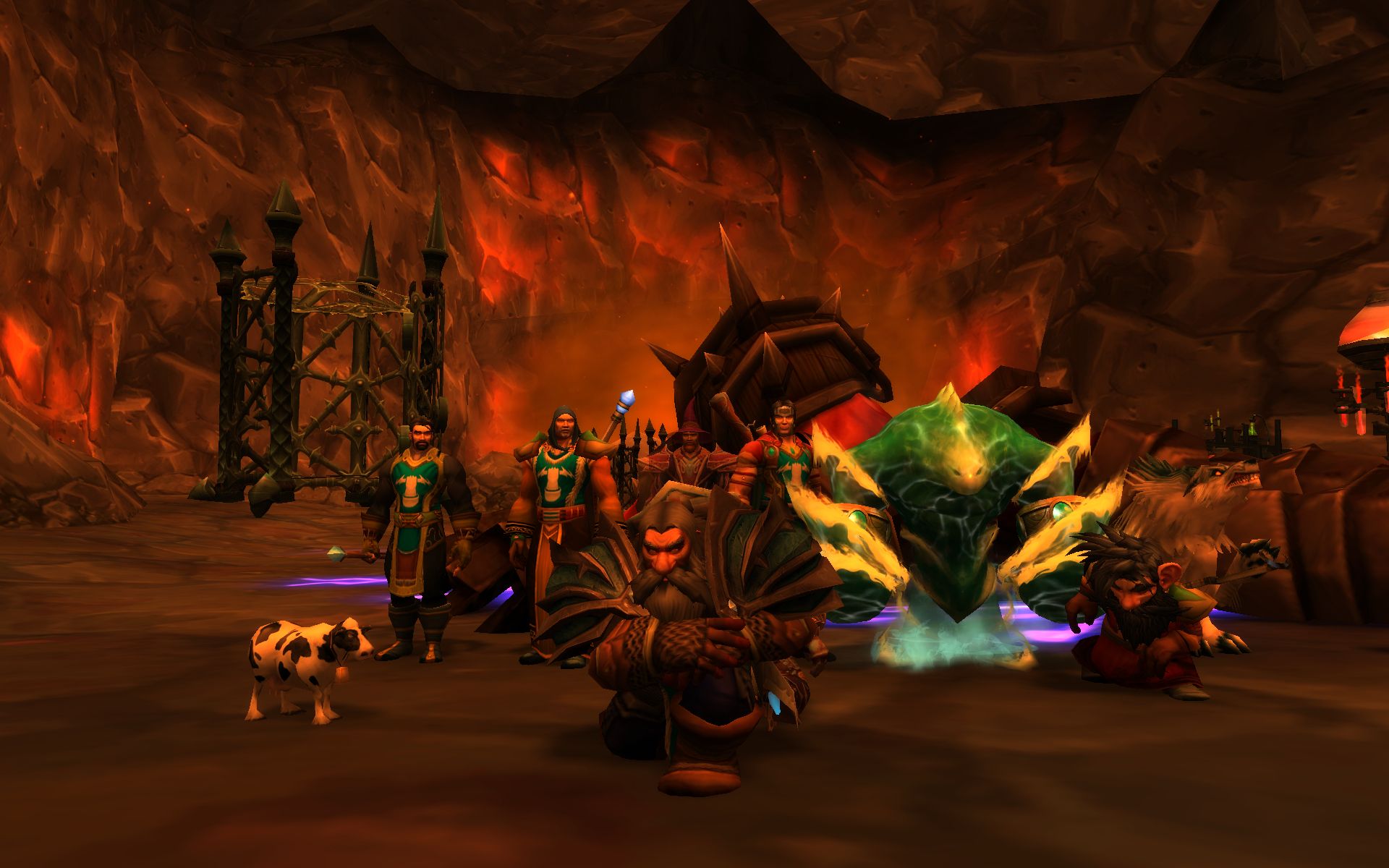
Using Irfanview (which admittedly is more of a viewer than an editor), I mucked around with adjusting contrast and saturation, but in the end found that the ‘auto adjust colours’ setting did a pretty good job:
Deatils are much clearer, at the cost of some depth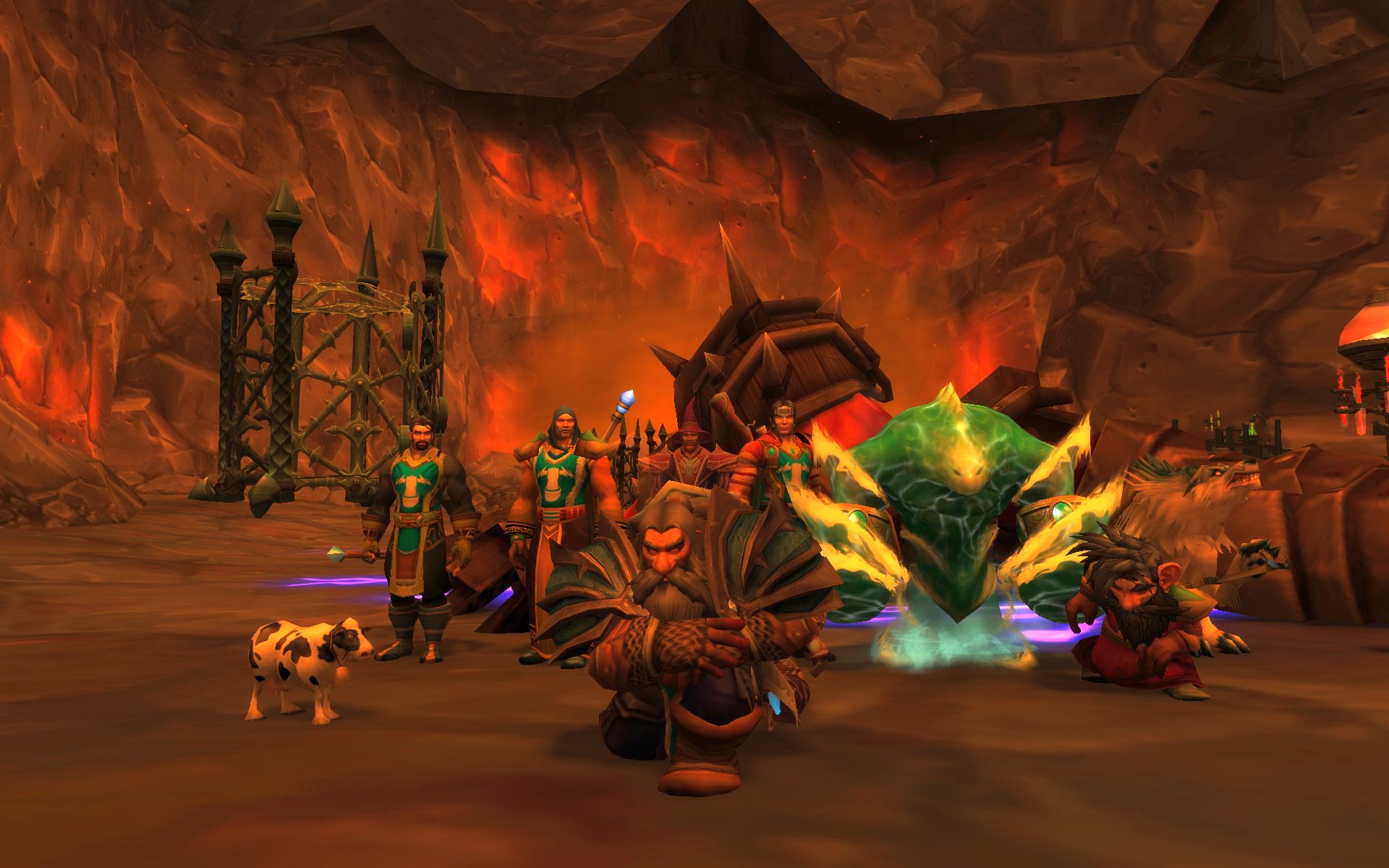
Finally I used the ‘sharpness’ setting to see what that would do:
Things like belts, tabard edges, and moustaches(!) are picked out, though there is some jagged edging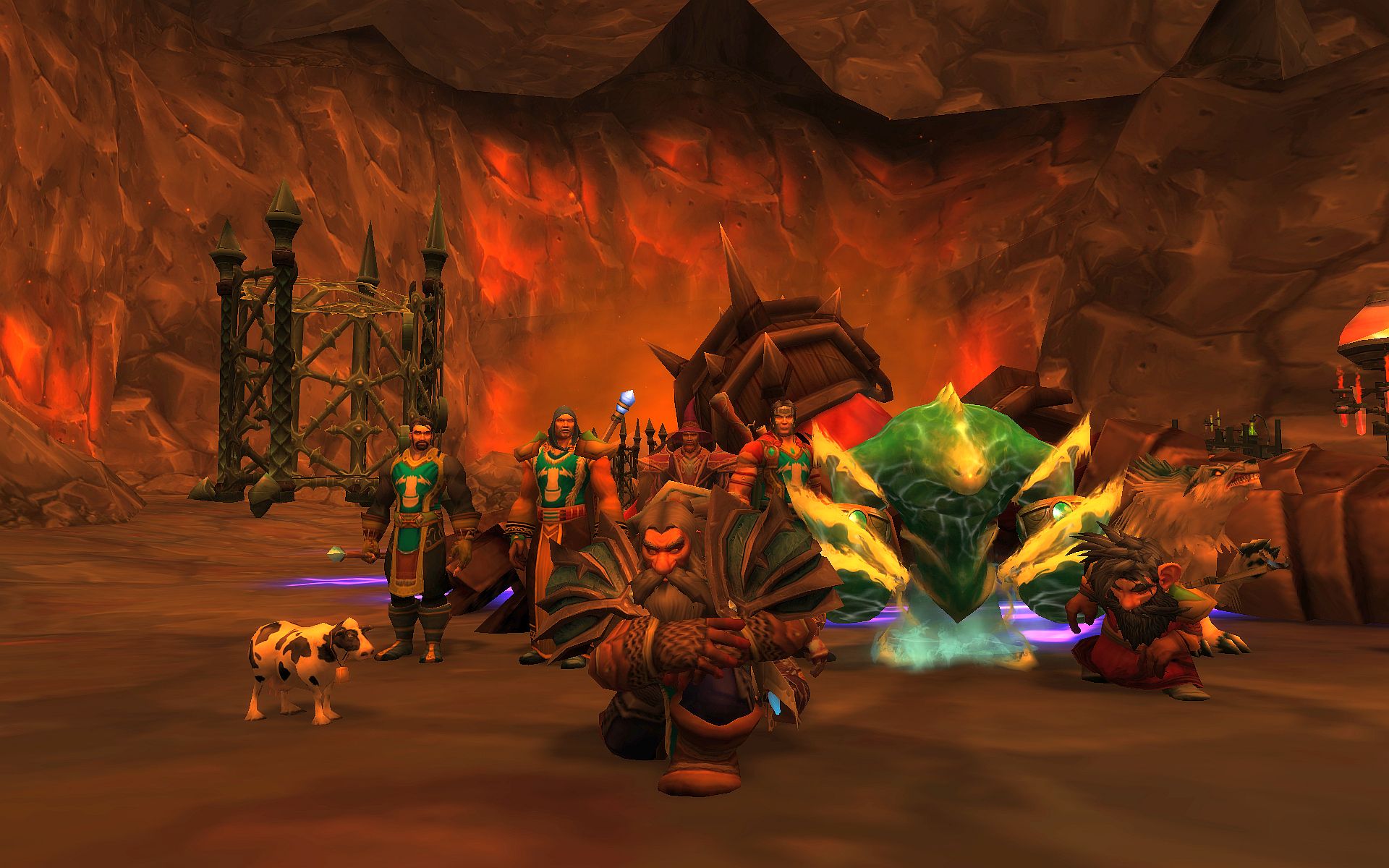
Hm. I like that you can see more once it’s adjusted, but it does wash it out a fair bit. I guess using the default settings isn’t a great plan - more to learn and more experimenting to come. Either that or I should just start taking screenshots in daylight…
Why we watch
Mailvaltar has an interesting post about why we sometimes prefer to watch rather than play a game. Having a love/hate relationship with Overwatch means that they prefer to watch the game instead of the stress of the pressure to perform when playing. I can totally understand that tension - Overwatch is a sure fire stress machine if you’re having a bad run.
I watched some of the Overwatch League and enjoyed it, but I did find there was a fair bit of assumed knowledge and often not enough time to unravel what just happened. Often a critical play would happen off camera, just because the maps aren’t compressed into a single camera zone. And I’d pretty quickly start thinking I should be playing rather than watching. That’s not a feeling I get watching live sports, for example, because you can’t just stop watching and go play a quick game of rugby or basketball. With gaming you obviously can.
The time investment required to watch something is probably where I balk, especially when compared to reading. A live of recorded video requires full attention and doesn’t allow much time shifting, or doing something else simultaneously. Whereas I love reading about games, especially on blogs where you get a personal take on something rather than the often banal professional feed. Mailvaltar’s example of TAGNs Eve posts is a great example - I don’t play, and likely never will, but still enjoy reading about it immensely.
I’ll also check in on Polygon and Kotaku regularly for the industry side of things. And I very happily subscribed to the printed version of Edge magazine, which is a superb publication that has somehow managed to retain incredibly high production values in this age of the near death of the newsagent.
Mailvaltar closes with this observation, which is spot on:
For a long time I couldn’t quite come to terms with the fact that enjoying a game doesn’t necessarily require to actually play it.
I feel the same way, though I still get itchy hands reading the great Blaugust blogs about SWtOR, GW2, DDO, LotRO, etc, let alone all the incoming games on the horizon. The good news is someone out there will write about it, and it will become their passion, and we’ll get the benefit of them sharing that passion, even if we can’t play them all. Thanks in advance!
US Gamer - How World of Warcraft was made
Speaking of oral histories, US Gamer has just published an epic ‘How World of Warcraft was made’ article that interviews many of the main players - current game director Ion Hazzikostas, principal artist Jimmy Lo, and technical director Patrick Dawson, as well as old hands like Rob Pardo and Greg ‘Ghostcrawler’ Street.
It’s a huge effort by writer Mike Williams, covering everything from the genesis of the game through to the launch of BfA, and there’s a tonne of great quotes, detail, and concept art.
Tauren Shaman concept artwork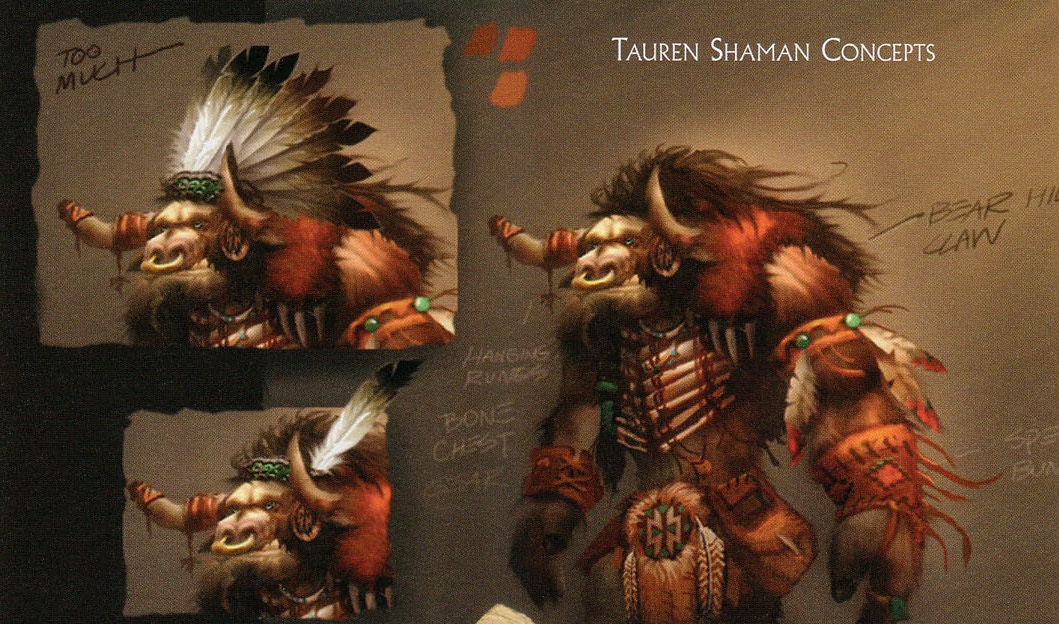
One of the emerging themes from the article is how random or lucky things would become key planks of the Warcraft experience. Originally quests were meant to run out eventually and leave the player with an open sandbox to play with:
“That was our on-paper design. But pretty early on, once we were doing team play tests, what we learned was the moment that you ran out of quests in your quest log, the game just felt broken and people didn’t know what to do,” says Pardo. “It was definitely this big moment where the team was like, ‘Uh oh, I guess we have to do ten times as many quests as we thought we were going to do.’ But I think it’s one of those great moments that happen in game development, where once you find the nuggets that are really fun, you double down on it.”
Similarly the art team were originally heading down the realistic graphics path before they decided something more hand painted might work better, as Lo describes:
“When we first saw the human farm building in Westfall, that was the first time where I was like, ‘Wow, I think we got something here.’ It was also cool because it had a handcrafted feel to it because we were painting everything; we weren’t photobashing and using photo textures. It went with the word ‘Warcraft.’ It had the ‘craft’ in it. It’s kind of a cool, happy accident that came to be.” “…I think with WoW it turned out as this kind of stylized, timeless art style where it aged very well. It never really got outdated.”
As has been recounted before, the team were also somewhat blindsided by the popularity of the game. Things like the opening of the Gates of Ahn’Qiraj were so popular designers had to intervene directly:
“I think the WoW development team maybe wasn’t as well-oiled of a machine back then, because it actually came as a surprise to the engineering staff that we decided to funnel the entire population of World of Warcraft into a single area. Everybody was waiting for that moment all in the same area,” recalls Dawson. “We’re sitting here teleporting out level 30 characters-‘You’ve have no business being here and you’re just killing your server!'-and we’re doing this by hand just trying to make it.”
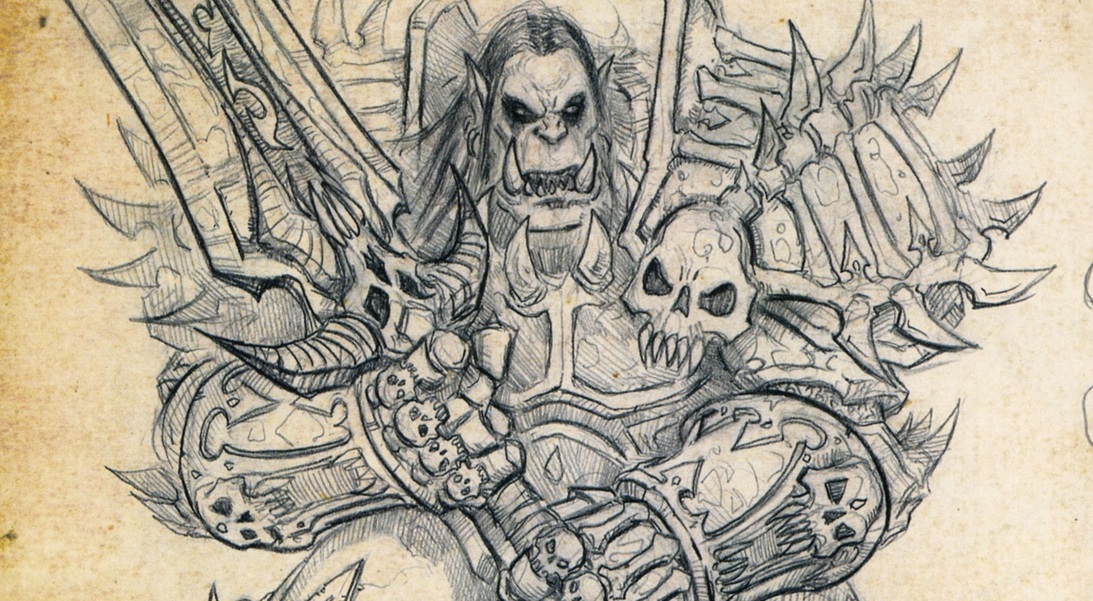
Orc Death Knight concept artwork
Greg Street talks about how the Cataclysm rejig started as a mission to refresh a few zones that were showing their age into something far greater (which perhaps explains why it wasn’t wholly successful):
“And so what started out as a series of surgical projects ended up with probably redoing 70 percent of the world in a very fundamental way. And so that was redoing 60 levels worth of content, redoing 70 percent of the entire [outdoor environments] from 2004, while also making five brand-new zones for leveling players from 80 to 85, and the new dungeons, new raids, and everything else. That was a tremendous undertaking.”
He also discusses how Mists of Pandaria was intially badly received by the playerbase:
“The mistake we made was we imagined that all WoW players loved the idea of a Pandaren, which had been originally kind of designed as a joke,” Street adds. “I think in retrospect if we had just made an Asian-inspired continent and had the Pandaren race, but not made them the focal point? Not named the expansion after it, not put a Pandaren Monk on the box, we probably wouldn’t have gotten that response. People saw the Pandaren and I think that was when they’re like, ‘Wow, they’re forsaking their roots.'”
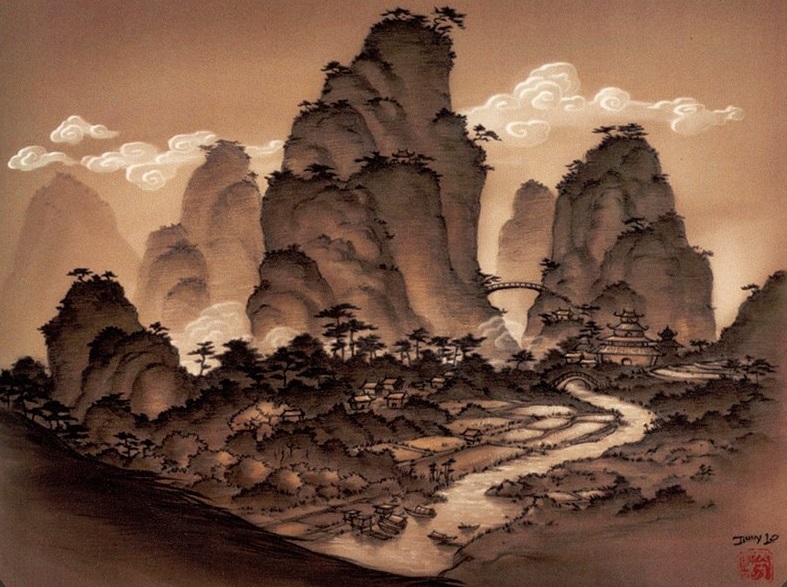
Mists of Pandaria concept artwork
Pandaria ended up being a player favourite, but (probably due to development lead times) Blizzard responded by building the polar opposite in Warlords of Draenor - as the author puts it, “If Mists of Pandaria was a lighter Chinese opera, Warlords of Draenor was literally death metal.”. And we all know how that turned out.
It’s a great article and a must read if you’re a fan of the game.
Goldeneyed
I love reading ‘oral histories’ of things , where a reporter gathers recollections of events or cultural phenomena and weaves together a story that becomes more real than a single perspective or more formal analysis. They can be slightly contrived, but when they’re done well they’re hard to beat.
A great example is this retelling of the filming of Predator, which is hilarious.
I really admire Arnold because he knew exactly what he was playing. I remember there’d be rewrites every morning, and one morning Arnold steamed out of his trailer straight up to John and grabbed him by the collar and said “John…” and John said “Yes?” “There are four words here; I’ll do three.”
Today I read a slightly more low key one about the making of Goldeneye, the classic Nintendo 64 game that (almost accidentally) reinvented - or more correctly invented - the multiplayer FPS on a console.
Doak: The multiplayer mode, which is now seen as critical for its big success, was for a long time just a wish-list thing, not a thing that we were definitely going to have. The N64 had four controller ports so it invited the idea that you’d have four-player split screen, but we were only going to program a multiplayer mode if we had time.
The story has some great images of hand drawn level maps and faxed bug reports. Amazingly the 21 year old game still has a vibrant and dedicated community playing it, largely due to the rise of speedrunning, and the support Goldeneye included for that activty before it was a thing:
Doak: We inadvertently invited speedrunning from very early on, because we had the timed unlocks. Clark: Finishing the level faster than the target time unlocked a cheat. The harder the target time, the more awesome the cheat mode: Turbo mode, Bond invisible, invincibility, unlimited ammo — essentially keys to enter God Mode, a means to explore the game in unimaginable ways. Personally, the challenge itself got me addicted: It was a very dynamic game for speedrunning, and the target times were a clear invitation to prove yourself. Facility 00 Agent’s target of 2:05 was the legendary measuring stick. The elite.net, the home of GoldenEye speedrunning, has been tracking records since 1998. Remarkably, the game has more active speedrunners right now than at any point in the past.
The speedrunning detail reminded me of an amazing video I stumbled across last year, which showed Australian (represent!) streamer Karl Jobst beating a 15 year old record as it happened. It takes 52 seconds and his reaction when he realises is incredible. From a completely relaxed start - and probably his billionth attempt so he’s not expecting anything - to an emotional wreck.
Watching that led to a rabbit hole of trying to understand what I was watching. The aforementioned The Elite Rankings has a huge history of speedrun times, and such esoteric concepts as tied vs non-tied world records. From there I found a YouTuber RWhiteGoose who has a channel where he talks in great detail about the lore of Goldeneye speedrunning. Some of the epsiodes run for hours talking about a 60 second level, discussing the records and how they were achieved and then bettered.
I was fascinated to see he’d posted an analysis of whether ‘Dam 52’ was even possible 10 months before Jobst proved that indeed it was.
All of which led to one of the most entertaining gaming videos I’ve ever seen. I kept seeing references to Ryan Lockwood’s legendary run on ‘Streets 1:12’, and eventually found Goose’s 2h40m analysis of that run, including the full video and audio. 2 and a half hours on a 1:13 run might sound excessive - ok it is excessive - but sit back, skip to 1:37:15, and enjoy.
Language warning!
Ragefire Chasming
Tonight’s Alliance guild expedition took us to the centre of Horde territory, into the catacombs below Orgrimmar: Ragefire Chasm.
Ragefire Chasm extends deep below the city of Orgrimmar. Barbaric troggs and devious Searing Blade cultists once plagued the volcanic caves, but now a new threat has emerged: Dark Shaman. Although Warchief Garrosh Hellscream recently called on a number of shaman to use the elements as weapons against the Alliance, the chasm’s current inhabitants appear to be renegades. Reports have surfaced that these shadowy figures are amassing a blistering army that could wreak havoc if unleashed upon Orgrimmar.
From an Alliance perspective that last report doesn’t sound entirely bad, but then unleashing uncontrolled shamanic magic is probably bad idea, so in we went to clean up the mess the Horde have made.
One these figures is much smaller than the others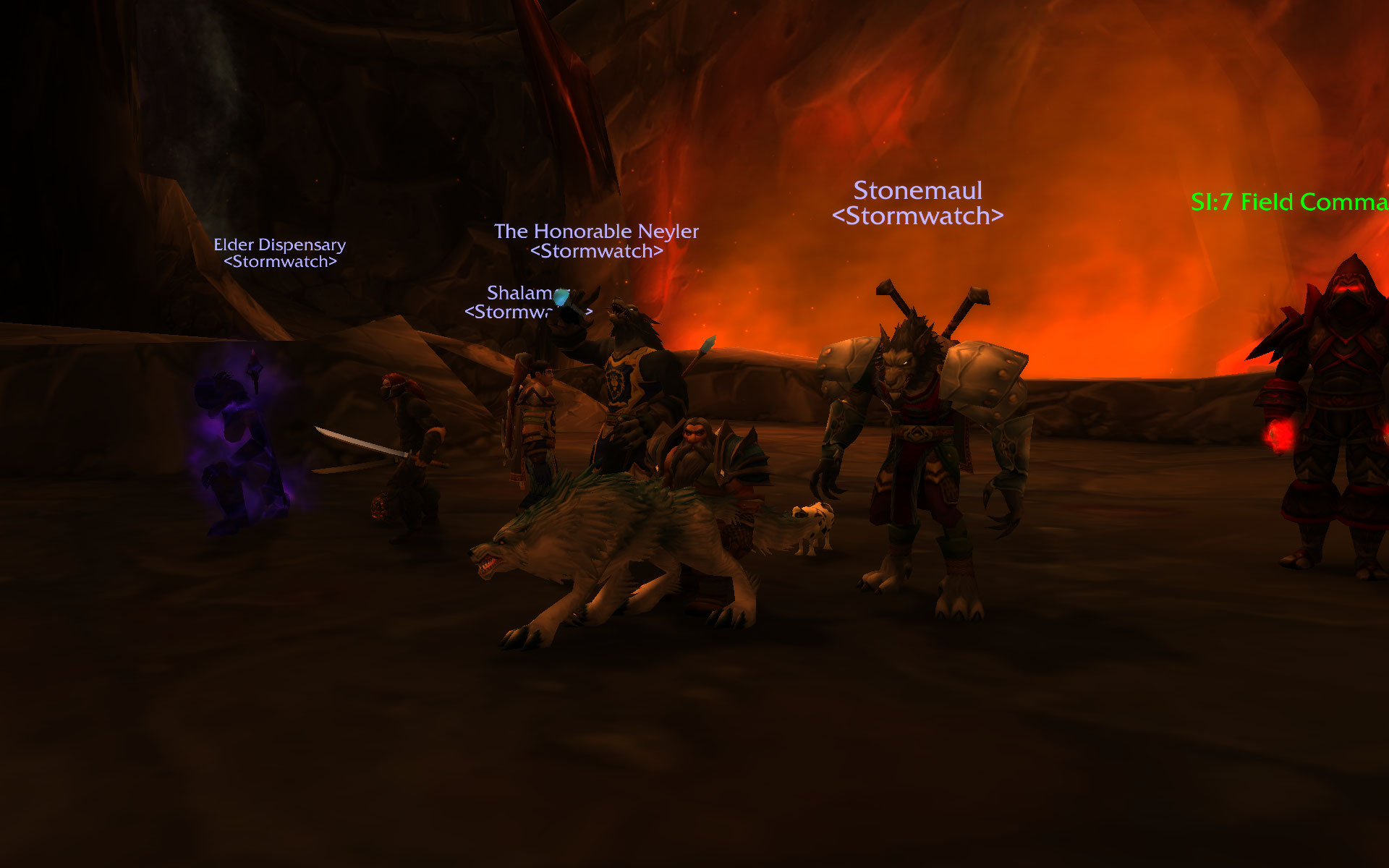
Compared to Deadmines, RFC is a quick and relatively unpopulated affair, with far fewer mobs and only tank & spank bosses - and the lava boss which I fell into fighting Slagmaw. Ahem.
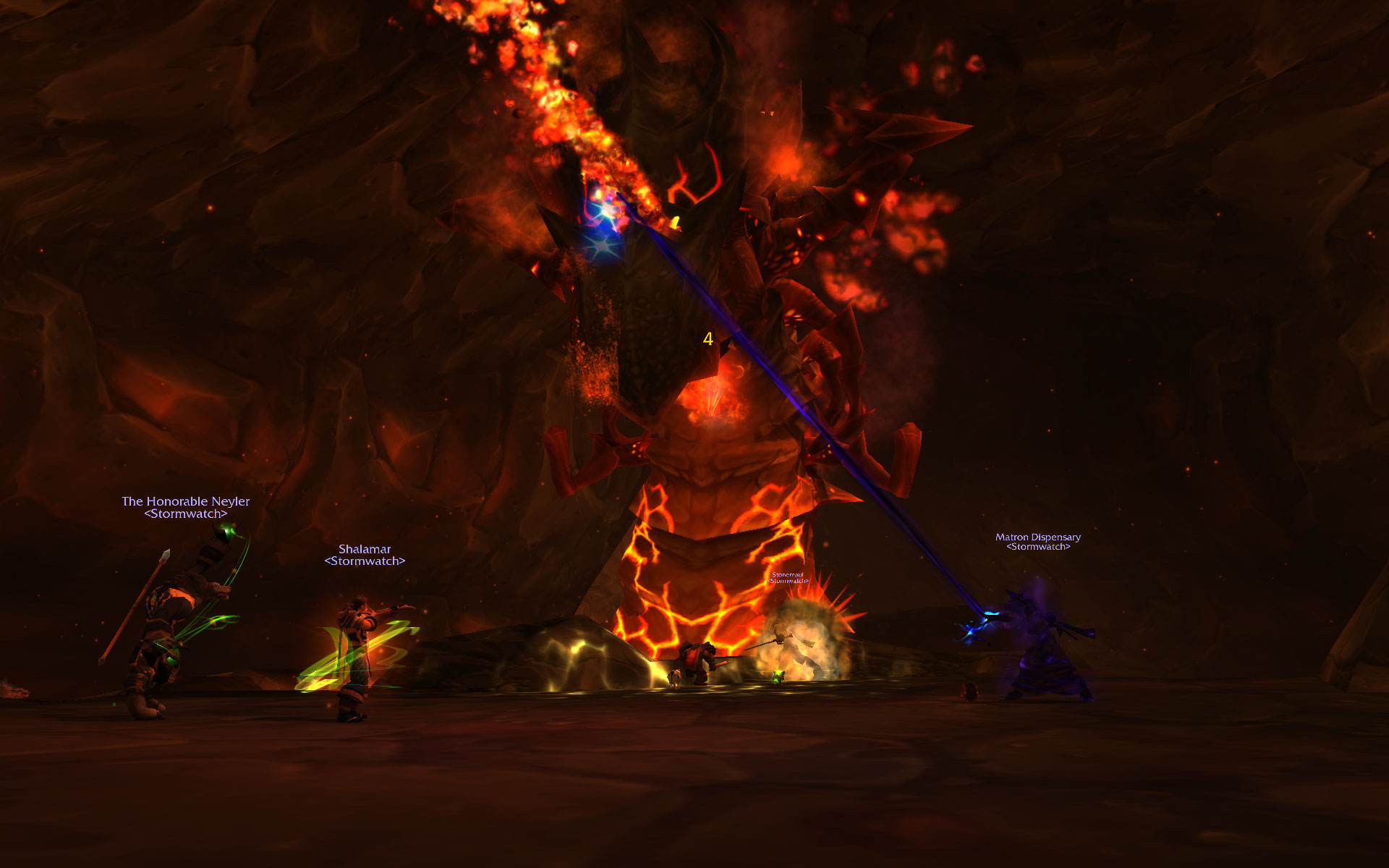
We made short work of everyone, rescued our trapped operatives, and cleared the dungeon to allow our investigators start unravelling what foul magic the Horde had managed to stir up and subsequently lose control of.
The Alliance continue to be upright and relatively dull - the Horde quests want you to basically just kill all of the things, the Alliance ones want to do some research - but we’re in this for the long haul and I’m warming to our Hordebreaking role. As we finished I copped some deserved ribbing for our guild tabard, which was dark red with a dark logo - my Horde bias clearly on show. So now we have a fetching new Alliance-blue number, with a clearly visible logo.
Unless you’re a Dwarf.
For the Alliance!